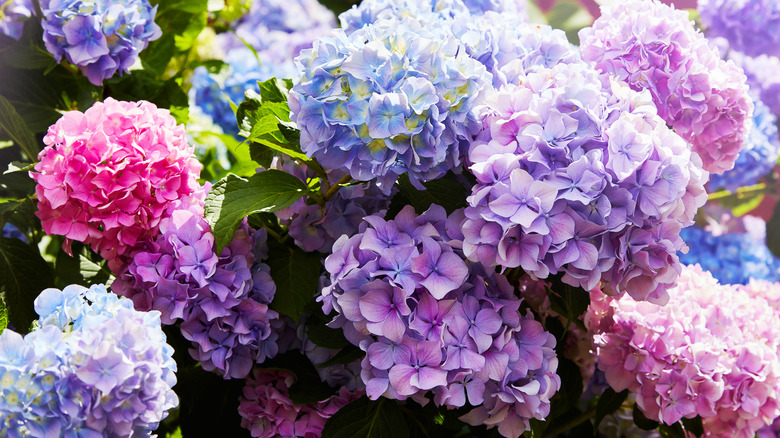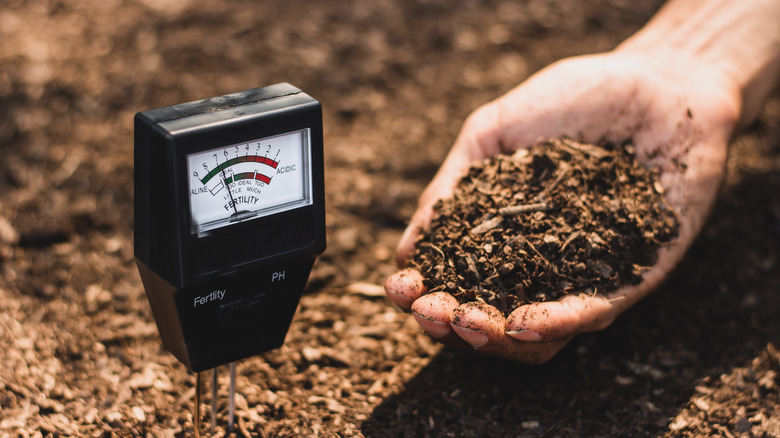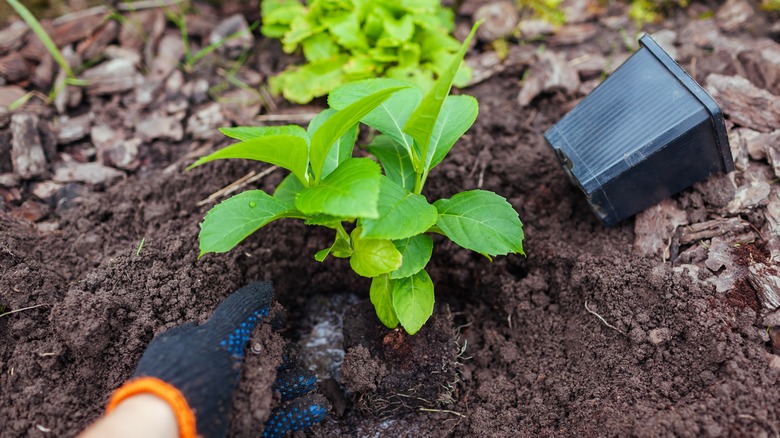The Stunning Hydrangea Variety Pinterest Recommends For A Garden Full Of Color
Hydrangeas (Hydrangea spp.) are a group of flowering plants known for their vibrant, large flower heads. Comprised of around 80 species, these plants vary widely in size, shape, and color, ranging from white and pink to blue and purple, depending on the soil's acidity. Hydrangea macrophylla, commonly known as the bigleaf hydrangeas, can be split into two categories: lace cap or mophead. Lace-cap flowers are round and flat whereas mophead flowers are large and billowy.
A striking mophead hydrangea variety (and Pinterest favorite) is Hydrangea macrophylla, aka "Endless Summer." While many hydrangea species bloom from either late spring to mid-summer or from summer through fall, "Endless Summer" produces colorful blooms all summer long.
"Endless Summer" hydrangeas produce large, round flower heads that can reach up to eight inches in diameter, exhibiting shades of blue or pink depending on the soil conditions. The showy sepals on the flower heads are sterile, with the fertile, less conspicuous flowers in the center. While filling your garden with color throughout the growing season, "Endless Summer" hydrangeas also attract a host of pollinators, including bees and butterlfies.
Why are Endless Summer hydrangea flowers special?
Hydrangea species bloom on either last year's or this year's growth, influencing when and how to prune hydrangeas. Species that produce flowers on new growth bloom from late summer to fall, while those that bloom on old wood flower from late spring to mid-summer. But while hydrangea macrophylla is a species that produces flowers on old wood, the "Endless Summer" cultivar is an exception. This variety blooms on both old and new wood, meaning that under the right conditions, this plant will produce a colorful display throughout the growing period.
Like other bigleaf hydrangea species, "Endless Summer" blooms will change color depending on the soil acidity: in acidic soils (less than pH 6.0) the flowers will be blue, and in alkaline soils (above pH 6.0) the hydrangea will produce pink flowers. You can measure the pH of your soil either with or without a home testing kit to determine the color of your "Endless Summer" flowers. It is possible to slightly change the pH of your soil, either by using dolomite lime to raise soil pH or aluminum sulfate to lower soil pH. Note that hydrangeas prefer slightly acidic soil, so take care not to increase the pH more than 6.4 as your hydrangeas may experience iron deficiency.
Hydrangea Endless Summer: how to grow and care
"Endless Summer" hydrangeas grow well as focal container plants or mass planted as part of informal gardens or woodland landscapes. They also make attractive additions to flower beds and borders. Like other hydrangeas, the "Endless Summer" variety prefers rich, moist soil that is well-draining. In heavy clay or naturally chalky soils, incorporate organic matter such as compost into the soil before planting. Dig a hole double the width of the root ball, plant your "Endless Summer," and backfill with fresh soil. Water well and maintain moisture; you may want to consider applying an organic mulch, such as bark chips, around the base of the plant to improve water retention.
Choose a location that receives partial shade or dappled sun — hydrangeas may tolerate full sun in moist soil but will perish in dry soils. When grown in full shade or insufficient light, your hydrangea may fail to flower. Feed your "Endless Summer" hydrangeas with a high-phosphorus, slow-release fertilizer at the beginning of the growing season to support healthy growth. As "Endless Summer" hydrangeas flower on both new and old wood, they only require minimal pruning. Remove dead or brown buds in late winter or early spring and avoid removing any fresh, green buds — these will provide you with a colorful display at the start of the growing season.


